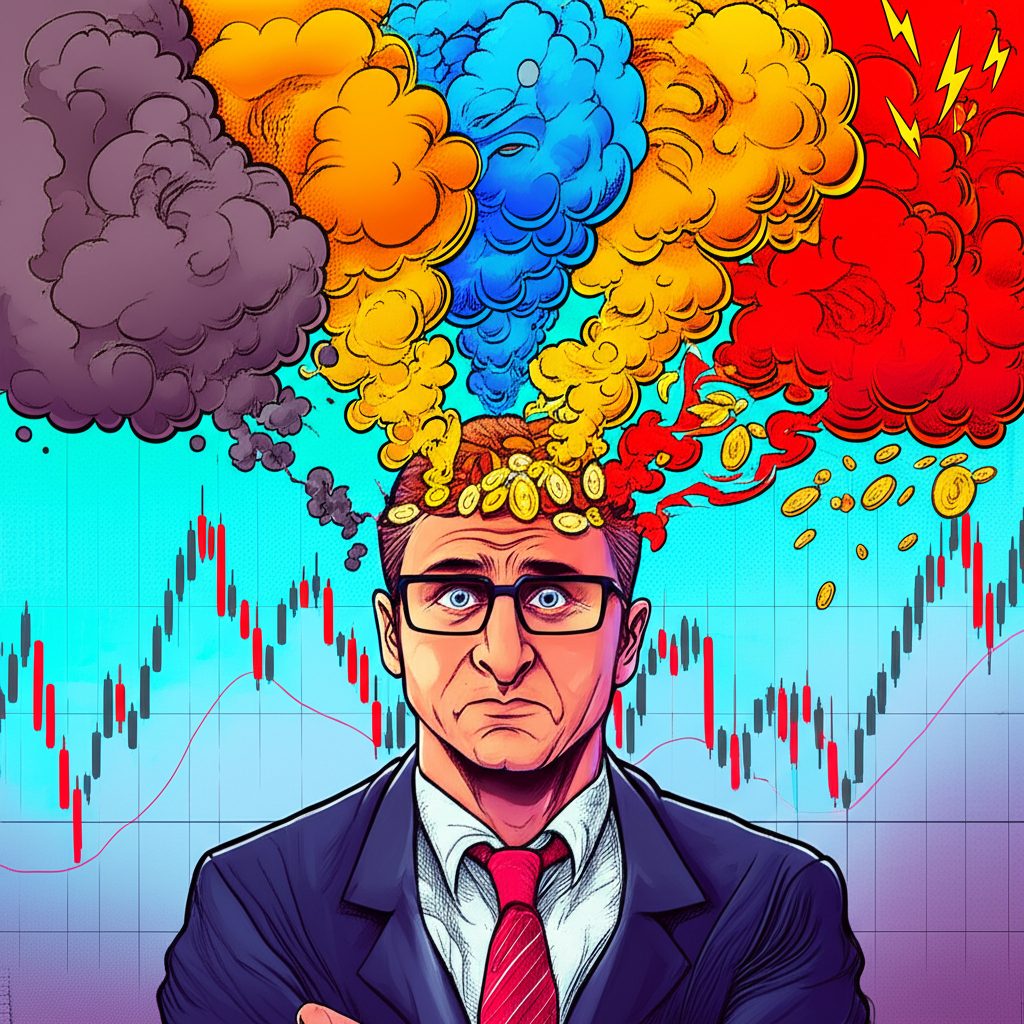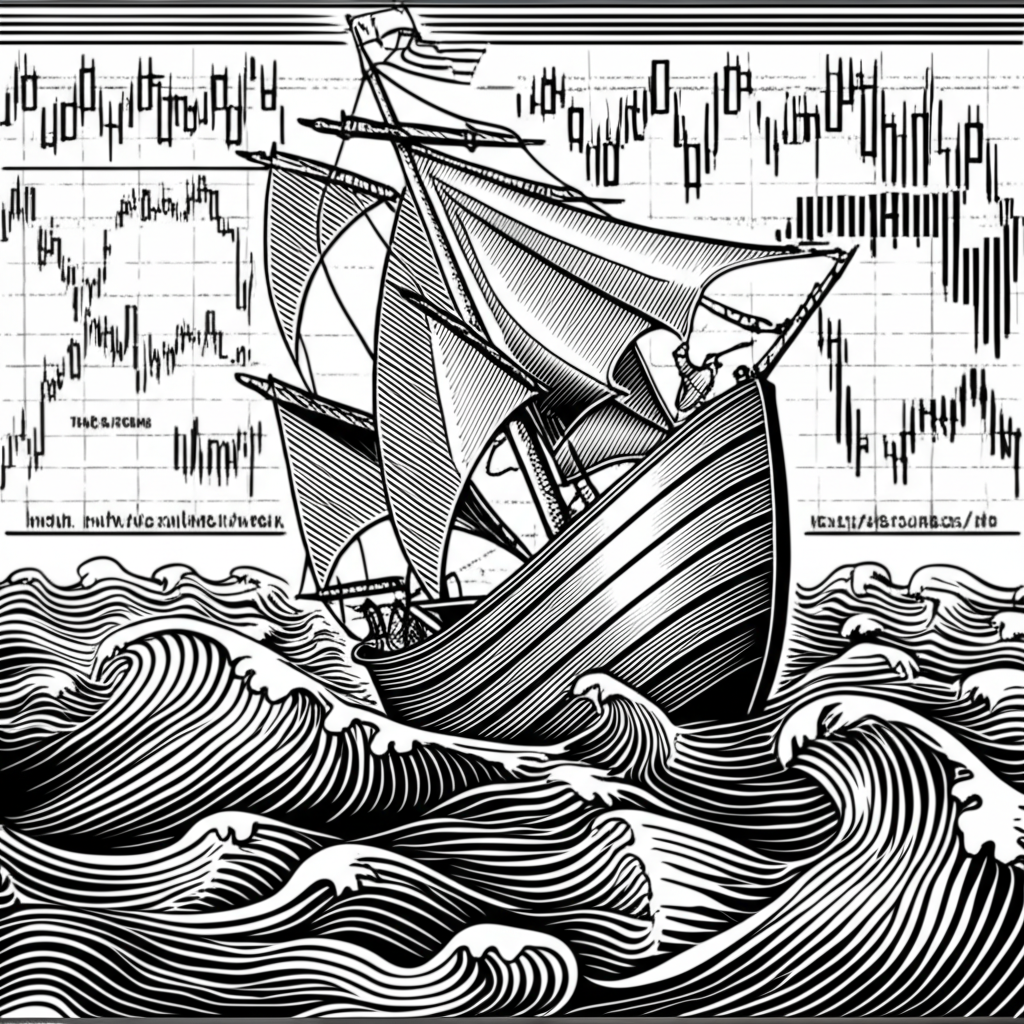Introduction: The Cost of Common Trading Mistakes
Stock trading promises the potential for substantial returns, but it’s a path littered with challenges—especially for those who dive in without preparation. While many are drawn by stories of quick wins and market success, the reality is far less glamorous. A large number of traders, particularly retail participants, end up losing money not because they lack intelligence or effort, but because they fall into predictable, avoidable traps. Studies frequently cite that between 70% and 90% of individual traders fail to turn a consistent profit, a sobering statistic that underscores how common mistakes can quietly erode capital and confidence. Even experienced investors aren’t immune, especially when emotions run high during turbulent markets or personal setbacks. This article unpacks the most frequent errors in stock trading, explores why they happen, and offers practical, battle-tested strategies to sidestep them—turning costly missteps into stepping stones toward long-term success.

The Psychology of Loss: Emotional Traps in Stock Trading
Behind most trading failures lies a hidden force: human emotion. Fear, greed, overconfidence, and regret can override logic, turning disciplined strategies into impulsive reactions. Behavioral finance has long shown that cognitive biases shape financial decisions more than we’d like to admit. Recognizing these mental patterns isn’t just insightful—it’s essential for building resilience in the face of market uncertainty.
Fear and Panic Selling: The Urge to Escape
When markets turn volatile, fear often takes control. A sharp drop in a stock’s price can trigger an instinct to sell immediately, regardless of fundamentals or long-term outlook. This knee-jerk reaction—panic selling—usually happens at the worst moment, locking in losses just before a possible recovery. The desire to avoid pain overrides rational thinking, and traders end up exiting positions prematurely, missing out on rebounds they could have benefited from. Over time, this pattern reinforces a cycle of loss and hesitation.
Greed and FOMO (Fear of Missing Out): Chasing Unrealistic Gains
Just as fear drives people to sell too soon, greed pushes them to buy too late. FOMO—the fear of missing out—can compel traders to jump into a fast-rising stock after most of the gains have already occurred. They see others profiting and feel pressured to act, often without researching the company or assessing valuation. Buying at the peak sets the stage for disappointment when the inevitable pullback occurs. Greed also manifests in holding winning positions too long, chasing ever-higher returns instead of securing profits at logical exit points.

Overconfidence and Confirmation Bias: The Illusion of Control
A few successful trades can create a false sense of mastery. Overconfidence leads traders to believe their judgment is infallible, prompting them to take larger risks, skip due diligence, or ignore warning signs. This mindset is often worsened by confirmation bias—seeking information that supports existing beliefs while dismissing contradictory data. For example, a trader bullish on a stock might only read positive analyst reports and overlook declining earnings or rising debt. This selective thinking distorts reality and increases the likelihood of significant losses when the market corrects.
Revenge Trading: When Emotions Take Over After a Loss
After a losing trade, frustration can build quickly. Instead of stepping back, some traders try to “get even” by placing bigger, riskier bets in rapid succession. This is revenge trading—a destructive habit where emotional pain overrides strategy. Decisions are made impulsively, without analysis or risk assessment. More often than not, this only deepens the loss, creating a downward spiral that’s hard to escape. The key to breaking this cycle is recognizing emotional fatigue and enforcing mandatory cooling-off periods after setbacks.
The Imperative of Planning: Mistakes in Strategy and Preparation
Emotions may pull the trigger, but poor planning loads the gun. Many traders jump into the market without a clear roadmap, relying on hunches or social media tips. Without structure, trading becomes reactive rather than strategic. Success in this arena doesn’t come from luck—it comes from preparation, discipline, and a well-defined approach tailored to changing market conditions.

Trading Without a Clear Plan: The Recipe for Inconsistency
One of the most critical mistakes is entering trades without a written plan. A solid trading plan outlines specific rules for when to enter and exit positions, how much to invest, what profit targets to aim for, and where to place stop-loss orders. It also defines which markets or instruments you’ll focus on and under what conditions you’ll trade. Without these guidelines, decisions become inconsistent and vulnerable to emotional influence. A trading plan isn’t a suggestion—it’s your foundation for accountability and long-term improvement.
Neglecting Fundamental and Technical Analysis: Flying Blind
Trading without research is gambling. Fundamental analysis helps you understand a company’s financial health, competitive position, and growth prospects. Technical analysis allows you to interpret price patterns, volume, and momentum to time entries and exits more effectively. Ignoring either approach leaves you exposed to misinformation, hype, or misleading trends. Relying solely on Reddit threads or influencer opinions may feel exciting in the moment, but it rarely leads to sustainable results. Diligent research separates informed decisions from reckless speculation.
Ignoring Market Context: Bull, Bear, and Volatile Conditions
Markets aren’t static—they shift between bull runs, bear declines, and sideways consolidation. A strategy that works beautifully in a rising market may fail completely during a correction. For instance, buying breakouts makes sense in strong uptrends but can lead to repeated losses in choppy, range-bound environments. Traders who ignore the broader context often misread signals and misapply tactics. Adapting your approach based on market regime—using trend-following systems in bull markets and mean-reversion strategies in volatile phases—can significantly improve your edge.
Overlooking Trading Costs and Fees: The Silent Profit Killer
For active traders, fees and slippage can silently eat into profits. Each trade comes with costs: commissions, bid-ask spreads, and potential tax implications. While these may seem negligible individually, they add up quickly with frequent trading. A strategy that looks profitable on paper might underperform in real accounts once expenses are factored in. High-frequency traders, in particular, must account for these hidden drains to ensure their edge isn’t erased by transaction costs alone.
Mastering Risk: Critical Mistakes in Money Management
If trading is a game of survival, risk management is the rulebook. No amount of skill or insight can protect your account if you don’t manage risk properly. One oversized loss can wipe out months of gains. The best traders aren’t necessarily those with the highest win rates—they’re the ones who protect their capital no matter what.
Failing to Implement Stop-Loss Orders: Letting Losses Run Wild
Perhaps the most preventable error is failing to use stop-loss orders. A stop-loss is a predetermined exit point that limits your downside on any given trade. Without it, traders often hold losing positions too long, hoping the market will turn around. This “hope-based” strategy rarely ends well. Small losses become large ones, and large ones can destroy an account. By setting and respecting stop-loss levels, you take emotion out of the equation and preserve capital for better opportunities.
Improper Position Sizing: Betting Too Much on One Trade
Putting too much capital into a single position is a fast track to ruin. Even if you have a high win rate, unexpected events—earnings misses, macro shocks, or sector-wide selloffs—can cause sudden reversals. Professional traders typically risk no more than 1–2% of their total capital per trade. This means that a string of losses won’t cripple your account, and you maintain the ability to keep trading through drawdowns. Position sizing isn’t about limiting profits—it’s about ensuring you stay in the game long enough to realize them.
Excessive Leverage: A Double-Edged Sword
Leverage amplifies both gains and losses. While it allows you to control larger positions with less capital, it also increases your exposure to price swings. A small adverse move in a highly leveraged position can trigger a margin call, forcing you to liquidate at the worst possible time. Novice traders often underestimate this risk, drawn by the allure of quick returns. But leverage doesn’t improve your odds—it magnifies your mistakes. Used cautiously, it can enhance returns; used recklessly, it leads to rapid account depletion.
Insufficient Diversification: All Eggs in One Basket
Even short-term traders can benefit from diversification. Concentrating your capital in one stock, sector, or market increases vulnerability to idiosyncratic risks. If a single company faces a scandal or regulatory issue, your entire portfolio could suffer. Spreading trades across uncorrelated assets—different industries, market caps, or even asset classes—helps smooth out volatility and reduce the impact of any single loss. Diversification isn’t about diluting returns; it’s about managing risk without sacrificing opportunity.

Execution and Discipline: Common Operational Errors
Even with a solid plan and sound risk management, poor execution can undermine everything. Discipline is what separates consistent performers from those who struggle. It’s easy to make the right decision in theory—but doing it consistently, especially under pressure, is where most traders fall short.
Overtrading: The Addiction to Action
Markets don’t always offer high-quality opportunities, yet some traders feel compelled to trade every day. Overtrading stems from boredom, impatience, or the belief that more activity equals more profit. In reality, excessive trading increases costs, clouds judgment, and leads to lower-quality decisions. The most successful traders are often the most selective, waiting patiently for setups that align with their strategy. Remember: it’s not about how many trades you make, but how well you execute the ones that matter.
Cutting Winners Short and Letting Losers Run: Flawed Profit/Loss Management
This counterintuitive behavior is rooted in emotion. Traders take small profits quickly to “lock in” gains, fearing they’ll vanish. At the same time, they hold onto losing positions, avoiding the pain of realizing a loss. This creates a dangerous imbalance: small wins and large losses. The opposite approach—letting profits run while cutting losses quickly—is a hallmark of disciplined trading. It requires patience and emotional control, but it’s essential for achieving a positive risk-reward profile over time.
Ignoring Your Trading Journal: Failing to Learn
A trading journal is one of the most powerful tools for growth, yet it’s often ignored. Without recording your trades—including entry and exit logic, market conditions, position size, and emotional state—it’s nearly impossible to identify recurring mistakes. Did you deviate from your plan? Were you influenced by fear or FOMO? A journal provides objective feedback, helping you refine your strategy and build self-awareness. Over time, it becomes a personalized playbook for improvement.
Our Differentiated Edge: Actionable Frameworks to Prevent Mistakes
Knowledge of common pitfalls is only valuable if it leads to action. Understanding what goes wrong isn’t enough—you need systems in place to prevent it. Our approach focuses on building structure, cultivating discipline, and turning insights into repeatable processes that protect and grow your capital.
Building a Robust Trading Plan: Your North Star
A comprehensive trading plan serves as your guiding compass. It should be a living document, clearly outlining:
- Strategy: Your entry and exit criteria, preferred timeframes, and technical or fundamental filters.
- Risk Parameters: Maximum loss per trade (e.g., 1–2%), stop-loss placement, and position sizing rules.
- Profit Targets: How and when you take profits, including partial exits or trailing stops.
- Asset Selection: The types of stocks or markets you’ll trade (e.g., large-cap growth, small-cap value).
- Market Regime Rules: How your approach changes in trending vs. volatile environments.
- Psychological Guidelines: Pre-trade checklists, emotional triggers to watch for, and routines to stay focused.
- Review Process: How and when you analyze your trades to refine your approach.
This plan becomes your anchor, ensuring consistency even when emotions run high.
Psychological Resilience: Tools for Emotional Control
Managing your mind is just as important as managing your money. Consider integrating these practices:
- Mindfulness Exercises: Spend a few minutes before trading to center yourself and observe thoughts without reacting.
- Pre-Trade Checklists: Use a simple list to confirm every trade aligns with your plan and risk rules.
- Post-Loss Breaks: Step away from the screen after a losing trade to reset emotionally.
- Emotional Logging: Note your mood before and after each trade to identify patterns over time.
- Loss Acceptance: Reframe losses as tuition, not failure. Every loss that stays within your risk limit is a successful trade in terms of discipline.
Implementing Strict Risk Management Rules: Non-Negotiables
Make risk management automatic and non-negotiable. Key rules include:
- The 1% Rule: Never risk more than 1% of your account on a single trade. For a $10,000 account, that’s $100 max per trade.
- Favorable Risk-to-Reward: Aim for trades with at least a 2:1 reward-to-risk ratio—meaning potential profit is double the potential loss.
- Hard Stop-Losses: Always place a physical stop order. Mental stops are too easily ignored when pressure mounts.
- No Averaging Down: Avoid adding to losing positions. This often turns a small loss into a large one.
- Use a Position Sizing Calculator: Automate your calculations to ensure consistency and accuracy.
The oft-cited “90% rule” in trading—where 90% of traders lose 90% of their money within 90 days—serves as a stark reminder: without strict risk controls, survival is unlikely, especially for beginners.
The Power of Post-Trade Analysis: Learning from Every Experience
Growth happens not during the trade, but after it. Conduct a thorough review of every trade, regardless of outcome:
- Why did I take the trade? Did it match my strategy?
- Did I follow my plan? Or did emotion influence my entry or exit?
- What did the market do? Was the move predictable or driven by external news?
- How did I feel? Was I confident, anxious, or rushed?
Over time, this analysis reveals patterns—whether it’s a tendency to exit early, overtrade after wins, or ignore stop-losses. Use these insights to tweak your plan, eliminate weaknesses, and strengthen your process. Focus on execution quality, not just P&L. A losing trade executed well is still a win in the long run.
Conclusion: Turning Mistakes into Milestones
Stock trading is not a shortcut to wealth—it’s a skill developed through experience, discipline, and continuous learning. The path is filled with obstacles, from emotional pitfalls to strategic oversights, but each mistake holds a lesson. By understanding the common errors that derail most traders—poor risk management, emotional decision-making, lack of planning—you gain the awareness needed to avoid them. Success doesn’t come from never failing, but from failing wisely, learning quickly, and adapting relentlessly. Build a solid plan, enforce strict risk rules, and cultivate emotional resilience. View every setback not as a defeat, but as a milestone on your journey toward becoming a more consistent, confident, and capable trader.
1. What is considered the biggest mistake a new stock trader can make?
The biggest mistake a new stock trader can make is failing to implement and adhere to stop-loss orders. This allows small, manageable losses to escalate into significant capital depletion, often due to emotional attachment or the false hope of a market rebound.
2. How can I overcome the psychological biases that lead to poor trading decisions?
Overcoming psychological biases involves self-awareness and disciplined routines. Key strategies include:
- **Developing a detailed trading plan:** This removes subjective decision-making.
- **Practicing mindfulness:** Helps in recognizing emotional triggers.
- **Taking regular breaks:** Prevents emotional fatigue.
- **Maintaining a trading journal:** To track emotional states and identify patterns.
- **Accepting losses as part of the game:** Reduces the urge for revenge trading.
3. Is there a specific rule or percentage of capital I should risk per trade?
A widely recommended rule is the “1% Rule,” which suggests never risking more than 1% (or a maximum of 2%) of your total trading capital on a single trade. This means if you have $10,000, your maximum loss on any given trade should not exceed $100-$200.
4. What are the key components of an effective trading plan to avoid common errors?
An effective trading plan should include:
- Your specific trading strategy (entry/exit rules).
- Clear risk management parameters (stop-loss, position sizing).
- Profit targets and take-profit strategies.
- Criteria for asset selection.
- Consideration of market conditions.
- Pre-trade and post-trade routines.
- Emotional management guidelines.
5. Why do so many retail traders ultimately fail, and what common mistakes contribute to this statistic?
Many retail traders fail due to a combination of factors, often summarized by the “90% rule in trading.” Common contributing mistakes include:
- Lack of a defined trading plan.
- Poor risk management (e.g., no stop-losses, improper position sizing).
- Emotional trading (fear, greed, revenge trading).
- Overtrading and high transaction costs.
- Insufficient research and due diligence.
6. How can I prevent panic selling during sudden market volatility or downturns?
To prevent panic selling, establish clear exit strategies (stop-losses) *before* entering a trade. During volatility, remind yourself of your original trading thesis and risk tolerance. Consider taking a short break from monitoring the market if emotions run high, and focus on your long-term plan rather than short-term fluctuations.
7. What is the “3-5-7 rule” in investing, and how might it help avoid certain mistakes?
The “3-5-7 rule” is not a universally recognized or formalized trading rule. However, similar principles often appear in various forms of advice related to diversification, long-term investing, or risk management. For instance, it might suggest diversifying across 3 asset classes, holding for 5 years, and reviewing every 7 months. If interpreted as a structured approach to asset allocation and review, it could help avoid mistakes like over-concentration or neglecting portfolio rebalancing.
8. Should I diversify my portfolio even if I’m primarily a short-term stock trader?
While short-term traders often focus on fewer assets, some level of diversification is still advisable. Concentrating all your capital into a single stock or a highly correlated group of stocks exposes you to significant unsystematic risk. Even for short-term holds, spreading your risk across different, uncorrelated assets can cushion the blow if one trade goes significantly wrong.
9. How do overtrading and revenge trading manifest, and what are practical steps to stop them?
Overtrading manifests as excessive, often impulsive, trades leading to higher fees and emotional fatigue. Revenge trading is the urge to immediately recoup losses with larger, riskier bets. To stop them:
- **Define your daily/weekly trade limits:** Stick to your plan.
- **Take breaks:** Step away after a losing trade.
- **Analyze before action:** Ensure every trade aligns with your plan.
- **Acknowledge emotions:** Use a journal to record feelings and avoid acting on them.
10. What role does a trading journal play in identifying and correcting personal mistakes?
A trading journal is crucial for self-reflection and improvement. By documenting every trade (entry/exit, reasons, market context, emotions), you can:
- Identify recurring behavioral patterns (e.g., cutting winners, letting losers run).
- Analyze the effectiveness of your strategy.
- Track your progress over time.
- Learn from both winning and losing trades to refine your approach and minimize future errors.

留言